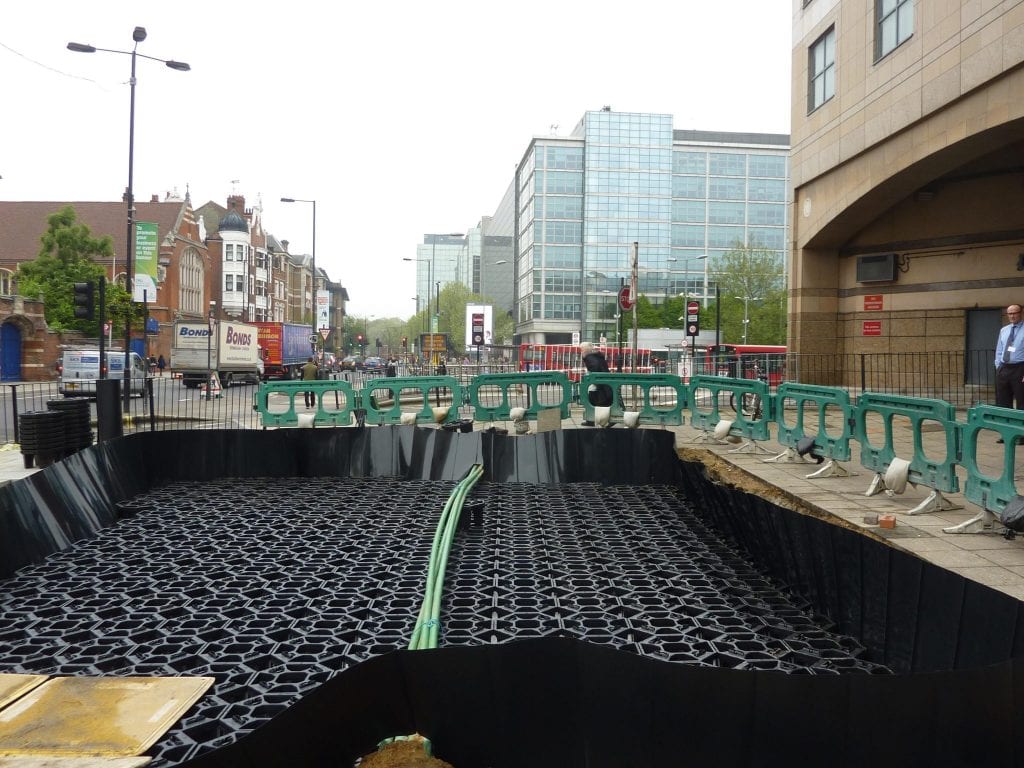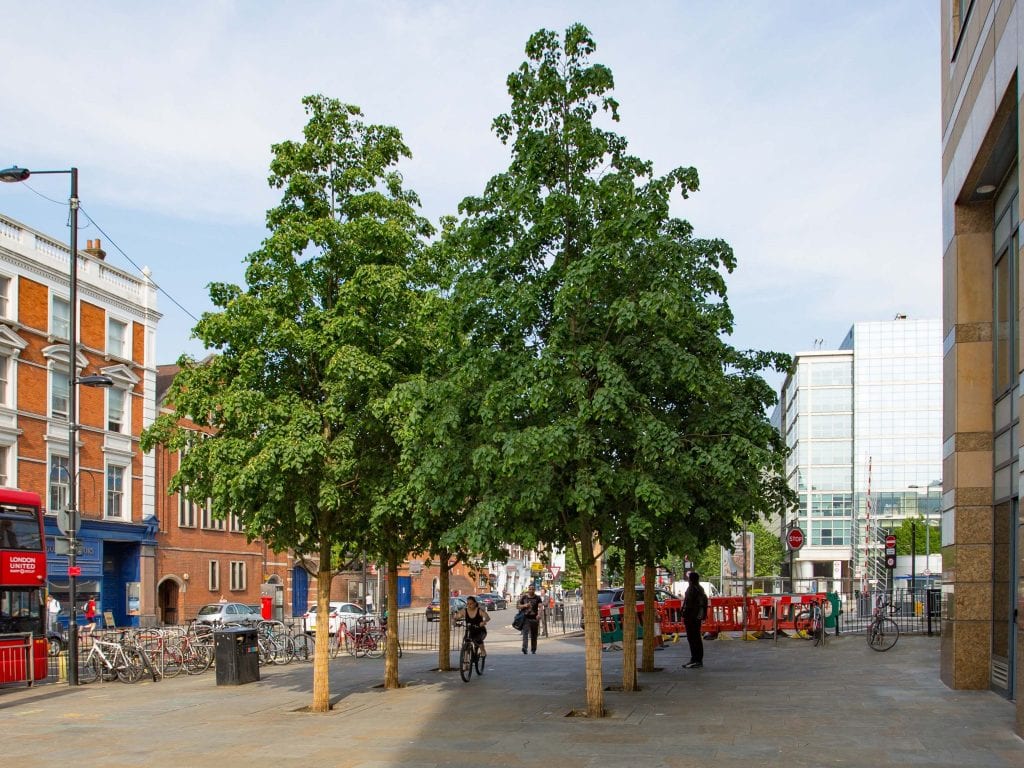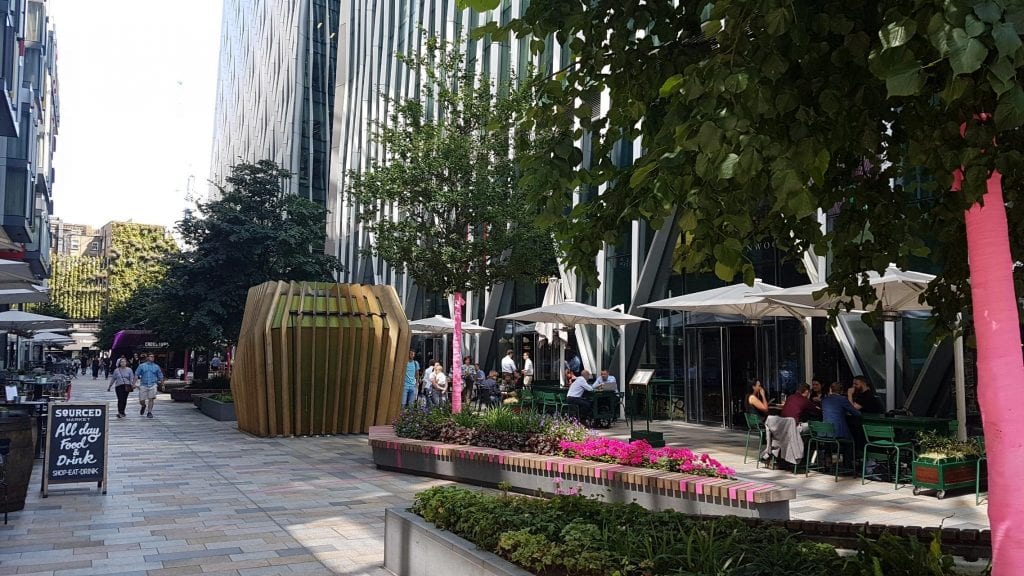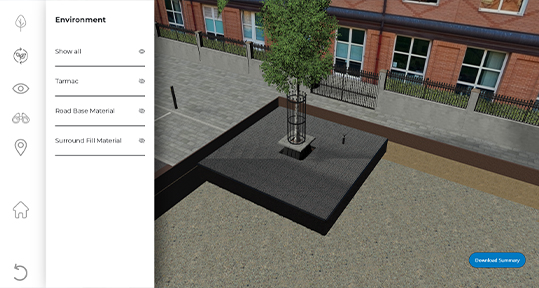Following some activity in the Twittersphere regarding the trees in planters in Kings Cross, a site adjacent to where we have delivered trees into our cell systems which provide for adequate soil volume and access to irrigation and the correct drainage, we felt duty-bound to respond.


In order to maximise the benefits of urban trees and particularly when considering high profile locations such as Kinga Cross, we have to consider canopy cover over trunk number, quality not the quantity of trees and often the planter is seen as a low maintenance, quick-fix solution to urban greening. However, trees will only deliver multiple benefits and humans derive the positives of the ecosystems services urban trees provide when canopy cover is maximised and leaf surface area at its optimum. Consideration of the following design criteria is critical to determining the effectiveness of any urban planting strategy:
- Availability of soil volume and room to grow
- Suitability of tree species and the quality of the specimen. Species selection is determined by site-specific characteristics
- Likelihood of damage
- Irrigation and water below ground
- Drainage of the ‘pit’
At the installation/ post-installation phase the following is crucial:
- Quality of soil and avoiding compaction
- Maintenance
- Possibility of blockages to drainage pipes
- Tree support
So what happens when trees fail in planters – why does this occur? This can be summed up in two simple statements- Planters are not a tree pit. Trees in planters are temporary trees.

Trees in planters have no access to long term soil volume or external nutrients from existing soils and therefore an inadequate provision of key elements that will ensure their long term vitality. Planters are often no larger than 5ft sq. Often there is an inadequate drainage strategy for trees in planters as in the Kings Cross scenario and most importantly the trees have no access to an external water source which means that what was considered a low maintenance option becomes an onerous task of continuous watering.
Additionally, oftentimes the canopy of trees in planters precludes rainwater getting into the planter which adds an additional challenge. The average lifespan of a tree in a planter is below 5 years so we have to ask the question where is the planter approach most appropriate. At GreenBlue Urban we believe that planters provide an opportunity to create on-street nurseries whereby trees are nurtured early years and then when sufficiently matured planted into a proper tree pit system.

Greenblue have 25 years experience working in complex sites such as Kings Cross and have overcome numerous supposed below ground constraints to deliver long term tree pit designs working around utilities and services. A great example of this is the project delivered at Hammersmith and Broadway:





